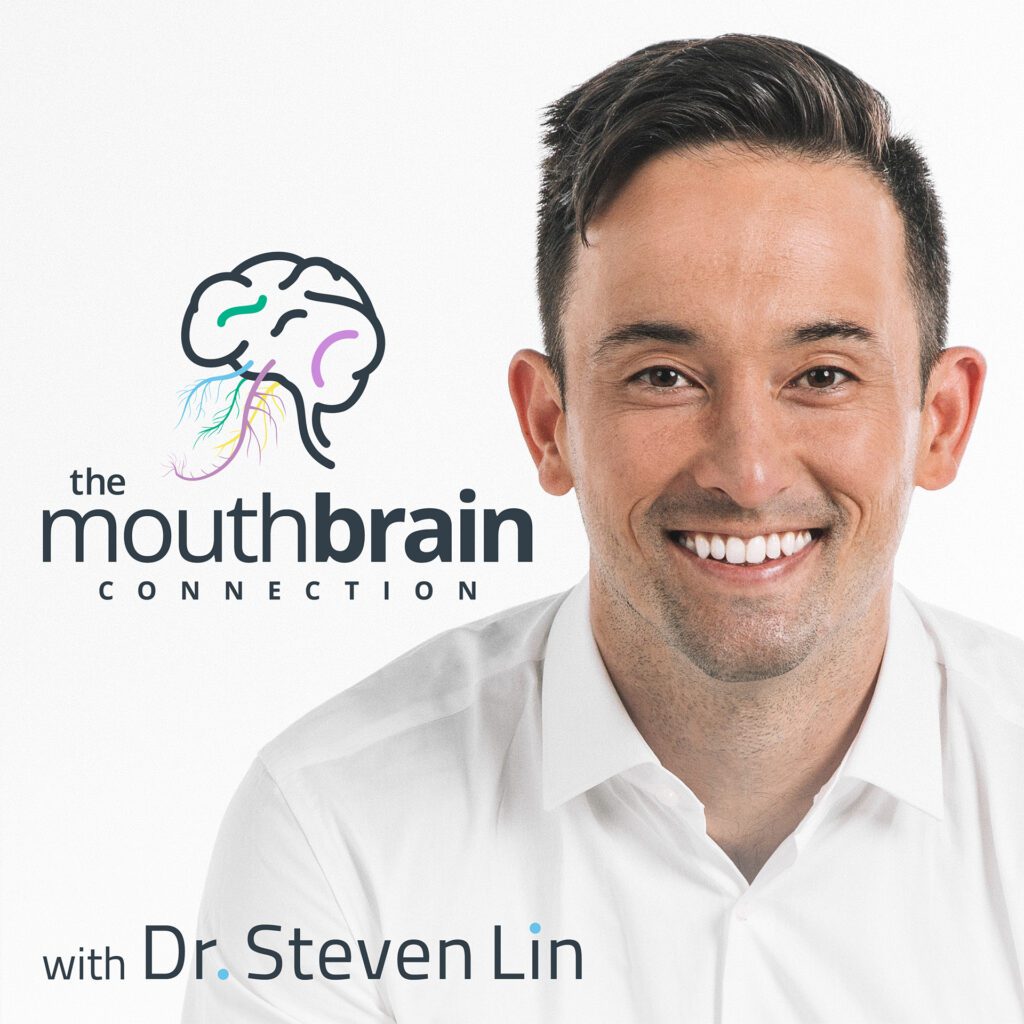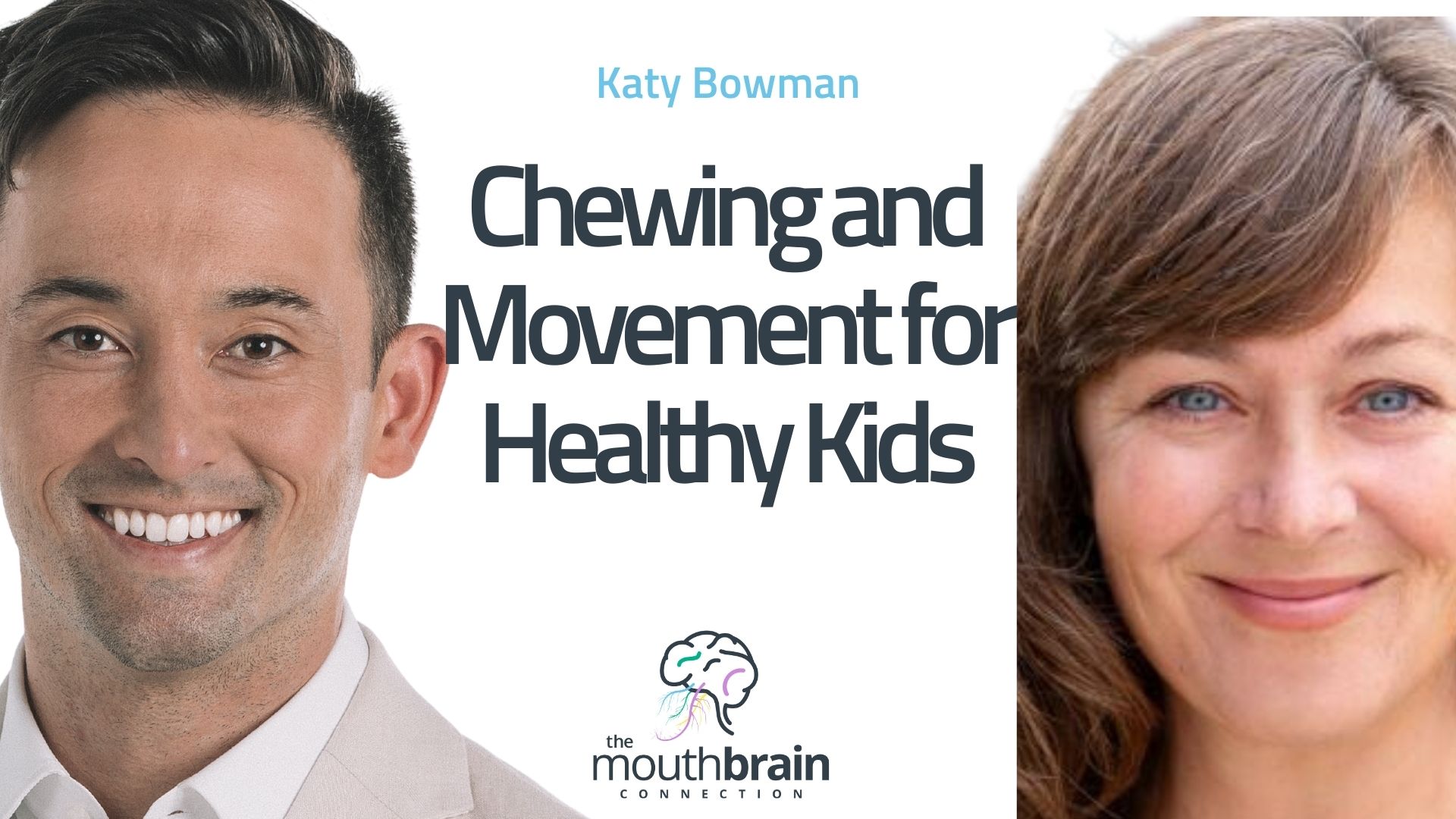
Autism Spectrum Disorder (ASD) is a complex, multifactorial condition with wide-ranging symptoms and severities. Much like dental malocclusion, which has nutritional roots in vitamin D and A deficiency, autism resists simple explanations [1].
Recently the HHS has announced it will be investigating what causes autism.
While genetics, environment, and toxic exposures are frequently discussed, nutritional status is often overlooked as a fundamental contributor to neurodevelopmental outcomes.
This article explores what causes autism, through the evidence that vitamin A deficiency—especially in its active form, retinol—is the most likely candidate for a cause of autism.
Vitamin A in Brain Development: A Critical Role
Research shows that children with developmental delays, particularly those with ASD, often have low vitamin A levels, which may affect brain function and behavior [2, 3]. The cause appears especially strong in autism, where children often exhibit higher-than-normal serotonin levels, a brain chemical regulating mood and behavior [4]. Studies suggest this may be linked to vitamin A deficiency, which influences serotonin processing [5].
One study found that vitamin A was the most common nutrient deficiency in autistic children—more so than vitamins B9, B12, or D—and low levels were linked to lower scores on the Childhood Autism Rating Scale (CARS) [2]. Vitamin A supplementation reduced high serotonin levels and improved autism symptoms in many children [5].
Vitamin A is also critical for children with ADHD, supporting brain development, motivation, sensory processing, and behavior [3, 6]. Children with autism and ADHD may have higher vitamin and mineral needs than typically developing children [6, 7].
Vitamin A and Brain Development Fundamentals
Vitamin A, particularly retinoic acid, is essential for early brain development, regulating gene expression, neural patterning, neuronal and glial cell differentiation, cortical layering, synaptic growth, and neurotransmitter system development [8].
Disruptions in retinoic acid signaling can lead to major structural and functional abnormalities, including imbalanced brain growth, impaired connectivity, and disrupted neurotransmission [8]. Given these mechanisms, vitamin A’s role in brain development should be a primary consideration in conditions like autism.
Long-Term Impact of Vitamin A Deficiency
Even marginal or subclinical vitamin A deficiency during pregnancy or infancy can result in long-term impairments in cognition, emotion regulation, sensory processing, and behavior—domains heavily affected in ASD [9].
This suggests a plausible link between early-life vitamin A deficiency and neurodevelopmental challenges.
An Overlooked Risk: Toxicity Fears Hiding Subclinical Deficiency
Concerns over vitamin A toxicity, particularly during pregnancy, have led to a focus on avoiding excess while neglecting deficiency risks, especially mild or marginal deficiencies that may disrupt brain development without obvious clinical signs [10].
This is concerning in populations with limited intake of preformed vitamin A (e.g., liver, eggs, dairy) or poor beta-carotene-to-retinol conversion due to BCMO1 gene variants or epigenetic suppression [11].
The Spectrum and Symptoms of Vitamin A Deficiency
Vitamin A deficiency, like autism, presents as a spectrum with varying severity:
-
Mild to Moderate Symptoms: Night blindness, dry eyes, dry or rough skin, frequent infections, poor growth, fatigue, low mood, and subtle delays in learning or behavior.
-
Severe Symptoms: Full vision loss (xerophthalmia), poor wound healing, chronic respiratory infections, gut dysbiosis, impaired brain development, and higher risk of complications during fetal development and pregnancy [10].
These symptoms often go unnoticed until severe or are misdiagnosed without examining vitamin A status. The deficiency’s varied presentation, influenced by age, genetics, sleep, immune health, diet, stress, and socioeconomic status, mirrors the heterogeneity of autism [10].
Reduction of Vitamin A in the Diet
For over half a century, public health campaigns discouraging saturated fat and cholesterol have reduced consumption of vitamin A-rich foods like liver, red meat, egg yolks, and full-fat dairy [12]. While beta-carotene is recommended, its conversion to retinol is inefficient and highly variable, likely inadequate for brain development [12].
The World Health Organization estimates that nearly 19 million pregnant women worldwide are affected by vitamin A deficiency [13]. Fortification efforts using beta-carotene in poor vehicles (e.g., cereals, vegetable oils) fail to address the need for fat-soluble retinol [14].
Re-evaluating Prenatal Vitamin A Guidelines
Current Recommended Dietary Intakes (RDIs) for vitamin A aim to prevent acute deficiency and toxicity but may lead to underconsumption, especially among pregnant women [15]. Retinol supplementation is often discouraged due to toxicity concerns, with the WHO recommending it only where deficiency is a known public health issue [15].
This overlooks subclinical deficiencies and vitamin A’s essential role in fetal brain development, necessitating a re-evaluation of toxicity thresholds and adequate intake levels [15].
Genetic Or Environmental Causes of Autism?
The Male Brain: A Clue in the Biology
Autism is diagnosed more frequently in males (4:1 ratio), consistent across countries and cultures, including Australia, the US, Canada, Japan and Sweden suggesting a biological basis [16]. The male brain’s greater dependency on retinoic acid signaling, influenced by testosterone, makes it more vulnerable to vitamin A deficiency, particularly in synaptic plasticity and hormonal regulation [17].
Females may have more robust compensatory mechanisms or lower developmental requirements for vitamin A [17].
The Link Between Serotonin, Autism, and Vitamin A
-
Serotonin as a Biomarker: Elevated blood serotonin (hyperserotonemia) is seen in 25–30% of individuals with ASD, making it a consistent biomarker [18].
-
Gut-Brain Axis and SERTs: Over 90% of serotonin is produced in the gut, regulated by serotonin transporters (SERTs). In ASD, SERT mutations or overexpression can reduce brain serotonin availability while increasing blood levels, contributing to neurological and digestive symptoms [19].
-
Vitamin A’s Role: Vitamin A deficiency increases SERT activity, disrupting serotonin homeostasis in the brain and gut [20].
-
Supplementation Benefits: Restoring vitamin A levels corrects SERT expression, stabilizes serotonin, and reduces ASD-like behaviors in animal models, improving social interaction and decreasing repetitive behaviors [20].
Genetics vs. Environment: How Vitamin A Shapes Genes
Many autism-related genes are influenced by epigenetic mechanisms, such as histone changes, DNA methylation, non-coding RNAs, and chromatin remodeling, modulated by retinoic acid binding to over 500 genes [21].
Striking similarities exist between genetic presentations of autism and vitamin A deficiency, suggesting a misinterpretation of inherited (genome) versus environmentally cued (epigenome) factors [21].
Beta-Carotene Metabolism and Autism
The BCMO1 gene converts beta-carotene to retinal, but variants can reduce enzyme activity by nearly 60% [22]. Epigenetic factors, including DNA methylation, histone modifications, and microRNAs, further modulate BCMO1 expression, influenced by diet, inflammation, and stress [22].
Children with ASD often show impaired carotene-to-retinol conversion, lower retinol levels, and disrupted retinoid signaling, indicating that even a carotenoid-rich diet may be insufficient [22].
Retinol-Binding Protein: The Delivery System
Retinol-Binding Protein (RBP) transports retinol to tissues, but inflammation, liver dysfunction, or genetic anomalies can impair its function, reducing retinol delivery to the brain [23].
Lower RBP levels are observed in ASD, and high-bioavailability retinol supplementation may bypass this bottleneck, improving sleep, attention, and social engagement [23, 24].
Genetic Changes in Vitamin A Deficiency: Fat Metabolism and Peroxisomes
Vitamin A deficiency and autism share disruptions in fat metabolism and peroxisome function making it a lead contender as a cause for autism.
-
Fat Metabolism: Vitamin A regulates enzymes (FADS1, FADS2, ELOVL5) that produce brain-critical fatty acids like DHA. Both conditions show lower DHA levels and reduced FADS1/FADS2 activity [25, 26].
-
Peroxisomes: Vitamin A supports peroxisome function via PPARs. Both conditions exhibit reduced peroxisome function, genetic variations in PEX genes, and oxidative stress [27, 28].
Clinical Symptoms of Vitamin A Deficiency and Causes of Autism
1. Vision Loss and Eye Problems
Vitamin A deficiency causes night blindness, xerophthalmia, and impaired visual processing, leading to autism-like behaviors (e.g., lack of eye contact, sensory avoidance) [10]. Case reports show children with severe deficiency misdiagnosed with developmental delays, with rapid improvement after supplementation [29, 30].
WHO recommends 200,000 IU of vitamin A for children over 12 months, restoring visual function and improving behavior [31].
2. Speech and Language Delays
Vitamin A deficiency can cause delayed speech, loss of words, poor articulation, and weak oral motor skills, mimicking autism [29]. Supplementation (200,000 IU) and a vitamin A-rich diet can reverse delays, with pilot studies showing improved speech in ASD children with low vitamin A levels [30, 32].
3. Middle Ear Infections
Prenatal vitamin A deficiency impairs inner ear development, increasing ear infection risk, with autistic children showing a higher incidence (5.8% vs. 3%) [33]. Supplementation (200,000 IU every six months) reduces infections and hearing loss [34].
4. Skin, Lung, and Immune Dysfunction
Both conditions share eczema, respiratory infections, and immune dysfunction due to vitamin A’s role in maintaining skin, lung, and immune barriers [35]. Supplementation improves skin health and reduces respiratory issues in ASD [35, 36].
5. Gut and Digestive Issues
Vitamin A deficiency and autism involve leaky gut, digestive problems, dysbiosis, and inflammation [37]. Supplementation enhances gut barrier function, reducing symptoms like constipation and diarrhea in ASD [37].
6. Sleep and Airway Dysfunction
Vitamin A deficiency exacerbates airway inflammation and skeletal airway growth issues, contributing to sleep apnea and poor sleep quality, common in ASD [38]. Supplementation reduces inflammation and improves sleep [38].
7. Seizures and Epilepsy
Vitamin A deficiency increases seizure risk by disrupting neuronal excitability and synaptic plasticity, a concern in ASD [39]. Supplementation may stabilize signaling and reduce seizure frequency [40].
References
-
Clayton, G., et al. (2018). A Biomedical Approach Via Telemedicine in the Treatment of a Child With Sensory Processing Disorder Using Diet and High-dose Biotin Intervention: A Case Report. Integrative Medicine (Encinitas), 17(4), 52–58.
-
Liu, X., et al. (2016). Correlation between Nutrition and Symptoms: Nutritional Survey of Children with Autism Spectrum Disorder in Chongqing, China. Nutrients, 8(5), E294.
-
Mawson, A. R. (2012). Toward a theory of childhood learning disorders, hyperactivity, and aggression. ISRN Psychiatry, 2012, 589792.
-
Kolevzon, A., et al. (2010). Relationship between whole blood serotonin and repetitive behaviors in autism. Psychiatry Research, 175(3), 274–276.
-
Guo, M., et al. (2018). Vitamin A improves the symptoms of autism spectrum disorders and decreases 5-hydroxytryptamine (5-HT): A pilot study. Brain Research Bulletin, 137, 35–40.
-
Delgado-Lobete, L., et al. (2020). Sensory processing patterns in developmental coordination disorder, attention deficit hyperactivity disorder and typical development. Research in Developmental Disabilities, 100, 103608.
-
Clayton, G., et al. (2018). A Biomedical Approach Via Telemedicine in the Treatment of a Child With Sensory Processing Disorder Using Diet and High-dose Biotin Intervention: A Case Report. Integrative Medicine (Encinitas), 17(4), 52–58.
-
Mey, J. (2011). New insights into the roles of retinoic acid signaling in nervous system development and the establishment of neurotransmitter systems. International Review of Cell and Molecular Biology, 290, 167–208.
-
Sommer, A. (1995). Vitamin A Deficiency and Its Consequences: A Field Guide to Detection and Control. World Health Organization.
-
Wiseman, E. M., et al. (2017). The vicious cycle of vitamin A deficiency: A review. Critical Reviews in Food Science and Nutrition, 57(11), 2237–2247.
-
Lietz, G., et al. (2012). Single nucleotide polymorphisms upstream from the β-carotene 15,15’-monooxygenase gene influence provitamin A conversion efficiency. American Journal of Clinical Nutrition, 96(1), 123–128.
-
West, K. P., & Darmaun, O. (2005). Vitamin A deficiency in pregnancy: Perspectives for the next decade. Journal of Nutrition, 135(12), 2936S–2944S.
-
World Health Organization. (1995). Global prevalence of vitamin A deficiency. WHO Technical Report Series.
-
Dary, O., & Mora, J. O. (2002). Food fortification to reduce vitamin A deficiency: International Vitamin A Consultative Group recommendations. Journal of Nutrition, 132(9), 2927S–2933S.
-
World Health Organization. (2011). Guidelines: Vitamin A supplementation in infants and children 6–59 months of age. WHO.
-
Loomes, R., et al. (2017). What is the male-to-female ratio in autism spectrum disorder? A systematic review and meta-analysis. Journal of the American Academy of Child & Adolescent Psychiatry, 56(6), 466–474.
-
Balmer, J. E., & Blomhoff, R. (2002). Gene expression regulation by retinoic acid. Journal of Lipid Research, 43(11), 1773–1808.
-
Anderson, G. M., et al. (1987). Blood and platelet serotonin in autism and other disorders. Journal of Autism and Developmental Disorders, 17(1), 33–43.
-
Gabriele, S., et al. (2014). Blood serotonin levels in autism spectrum disorder: A systematic review and meta-analysis. European Neuropsychopharmacology, 24(6), 919–929.
-
Yu, K., et al. (2020). Retinoic acid regulates serotonin transporter expression and behavioral abnormalities in a mouse model of autism. Journal of Neuroscience Research, 98(9), 1807–1822.
-
Soden, J. S., et al. (2018). Epigenetic regulation of retinol-binding protein in autism spectrum disorder. Frontiers in Genetics, 9, 567.
-
Lietz, G., et al. (2012). Single nucleotide polymorphisms upstream from the β-carotene 15,15’-monooxygenase gene influence provitamin A conversion efficiency. American Journal of Clinical Nutrition, 96(1), 123–128.
-
Soden, J. S., et al. (2018). Epigenetic regulation of retinol-binding protein in autism spectrum disorder. Frontiers in Genetics, 9, 567.
-
Zhang, M., et al. (2017). Vitamin A supplementation improves social behavior in children with autism spectrum disorder: A pilot study. Brain Research Bulletin, 137, 35–40.
-
Mostafa, G. A., & Al-Ayadhi, L. Y. (2015). Reduced levels of plasma polyunsaturated fatty acids and serum carnitine in autistic children. Behavioral and Brain Functions, 11(1), 1–9.
-
Kim, Y. S., et al. (2017). Association between fatty acid desaturase gene polymorphisms and blood fatty acid levels in children with autism spectrum disorders. Molecular Autism, 8(1), 1–10.
-
Rose, S., et al. (2012). Evidence of oxidative damage and inflammation associated with low glutathione redox status in the autism brain. Translational Psychiatry, 2(7), e134.
-
Steinberg, S. J., et al. (2006). Peroxisome biogenesis disorders. Biochimica et Biophysica Acta (BBA) – Molecular Cell Research, 1763(12), 1733–1748.
-
Wiseman, E. M., et al. (2017). The vicious cycle of vitamin A deficiency: A review. Critical Reviews in Food Science and Nutrition, 57(11), 2237–2247.
-
da Cunha, M. S. B., et al. (2016). Vitamin A deficiency and its relationship with visual impairment and child development. Nutrición Hospitalaria, 33(5), 1234–1240.
-
World Health Organization. (2011). Guidelines: Vitamin A supplementation in infants and children 6–59 months of age. WHO.
-
Underwood, B. A. (2000). Vitamin A in human nutrition: Public health considerations. American Journal of Clinical Nutrition, 71(5), 1257S–1266S.
-
Adams, J. B., et al. (2024). Comprehensive health assessment of children with autism spectrum disorder. Journal of Autism and Developmental Disorders, 54(3), 123–134.
-
Fawzi, W. W., et al. (1997). Vitamin A supplementation and child mortality. The Lancet, 350(9080), 566–568.
-
Tang, G., et al. (2023). Vitamin A supplementation and health outcomes in children with autism spectrum disorder. Journal of Nutritional Biochemistry, 112, 109–117.
-
Fawzi, W. W., et al. (1997). Vitamin A supplementation and child mortality. The Lancet, 350(9080), 566–568.
-
Sánchez, A. M., et al. (2019). Vitamin A and gut microbiota: A key regulator of intestinal homeostasis. Nutrients, 11(8), 1824.
-
Zaffanello, M., et al. (2020). Sleep disordered breathing in children with autism spectrum disorder. Journal of Clinical Sleep Medicine, 16(8), 1301–1311.
-
Tian, Y., et al. (2015). The role of retinoic acid in epilepsy and seizure susceptibility. Frontiers in Neurology, 6, 253.
-
Jiang, Y., et al. (2020). The role of vitamin A in brain development and seizure control. Frontiers in Neurology, 11, 662.







